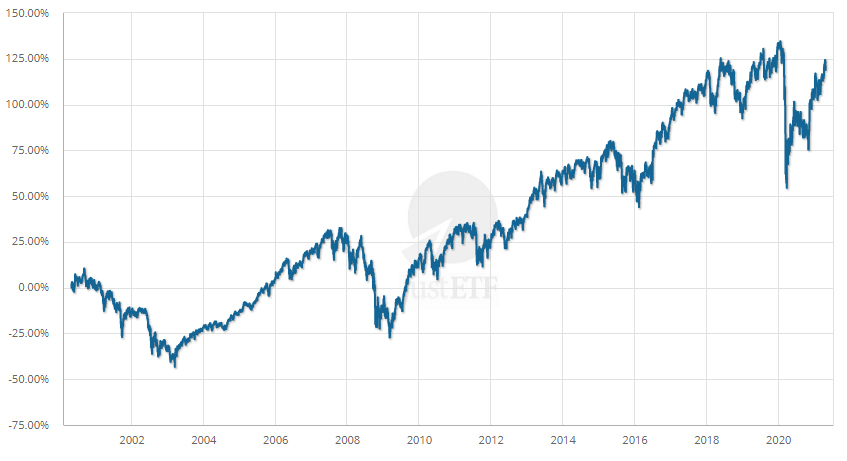
Rebalancing is the best practice for most investors because it enables you to control your level of risk and to take advantage of a phenomenon known as mean reversion.
The mean reversion phenomenon
The theory of mean reversion suggests that, sooner or later, asset prices return to their average or mean. For example, UK equities have historically delivered an average real return of about 5% a year.
So if we experience years of above-average performance, there’s a strong chance that those good times will be followed by a period of sub-average performance that restores prices to “fair value”.
Mean reversion has been identified across many asset classes and countries and helps explain why bubbles burst. Once investors realise an asset is overvalued then demand falls (along with performance) until prices reach a reasonable level again.
The same is true in reverse i.e. an asset that underperforms should eventually swing back to its average as investors realise it’s undervalued and bid up the price.
FTSE 100 long-term development
![FTSE 100 long-term development FTSE 100 long-term development]()
iShares Core FTSE 100 UCITS ETF (Dist)
Source: justETF Research; as of 21/04/2021
Market-timing investors tend to undermine their returns because they end up on the wrong side of mean reversion. They buy into an asset after the price has become overinflated. They then compound the mistake by selling in a panic on the downswing. Then they put their shrinking pot into another “hot" asset and the cycle repeats. This is known as buying high and selling low and is best avoided for the health of your wealth.
Rebalancing is the technique that counters this mistake. It simply means that you sell out-performing assets in your portfolio and you buy the under-achievers.
This way you buy assets that are relatively low in price and sell those that are relatively high. You buy low and sell high in other words.
But how much should you trade and how often?
Your original asset allocation decides this question.
If you’ve decided that a 50-50 split between equities and bonds is right for you then you trade when that mix meaningfully changes.
For example, say your portfolio is worth £10,000 but, after a good run, equities now make up 60% of your portfolio versus 40% for bonds. You would then sell £1,000 of equities and buy £1,000 of bonds to rebalance your portfolio back to its 50-50 asset allocation. In other words, you would now own £5,000 of equities and £5,000 of bonds.
This is an excellent method of risk control. If you don’t rebalance then it’s highly likely that your
asset allocation will drift over time into a mix that you didn’t choose and may not be able to handle. Because equities tend to outperform bonds over time, a 50-50 portfolio that isn’t rebalanced could become 70% equities or even higher. In the event of a stock market crash, a risk-averse investor could easily panic in the face of a catastrophic fall in their portfolio’s value, sell out of equities and lock in their losses.
Rebalancing helps you keep your portfolio in line with your risk tolerance and ensures you sell assets that are on the up – reducing your exposure to bubbles.
Now you don’t rebalance every time an asset overshoots your allocation by 1%. If you rebalance too often then you’re likely to damage your returns by incurring excessive costs in dealing fees and taxes.
Calendar rebalancing
Perhaps the simplest way to avoid excessive rebalancing is called calendar rebalancing. This typically means that you rebalance your portfolio back to your original asset allocation once a year.
It’s a very straightforward method but the disadvantage is that a lot can change over that timeframe, especially when markets are volatile.
Threshold rebalancing
A more sophisticated method is to use threshold rebalancing. In this instance, you rebalance every time your asset allocations tip beyond a certain trigger point.
For example, you might set your threshold at 5 percentage points. In our 50-50 portfolio, this means that you would rebalance whenever an asset goes over 55% or under 45% of your portfolio.
In a simple and efficient way, you set thresholds at a strategic level: for example bonds versus equities versus property, while if you want to have finer control of your portfolio you may set it at an ETF level: for example,
UK equities versus
US equities versus
Emerging Markets.
Threshold rebalancing is a best-of-both solution: you may not rebalance for years in a steady market, but will keep a firm grip on your portfolio’s risk exposure when the situation is choppy.
The higher you set your threshold, the more risk you’ll take and the more you’ll take advantage of momentum while keeping dealing costs down.
However, 5 percentage points is a sensible trigger point that’s widely recommended and justETF’s portfolio monitoring service will notify you when your strategic asset allocations breach this threshold.
Bear in mind that large portfolios in taxable accounts can trigger capital gains tax liabilities when you sell. Moreover, small trades and small portfolios are disproportionately impacted by flat-rate dealing fees.
Cash flow rebalancing
A good solution to these problems is to rebalance whenever possible with new contributions. These can be any combination of new cash, dividend income or interest income. Instead of selling one of your ETFs, you would direct the new contributions into an underperforming asset to restore it to its correct allocation. This works particularly well if your broker operates a regular investment scheme that discounts purchase orders.
Many investors find rebalancing difficult because it’s counter-intuitive to sell a “winning” asset in favour of a “losing” one. Just remember that no bull market lasts forever and that mean reversion is a powerful force. Volatile markets favour rebalancing and your long-term success relies upon discipline, risk control and buying low and selling high.
justETF Portfolio Rebalancing function including
automatically generated order list
Try now

